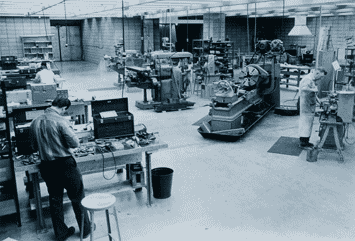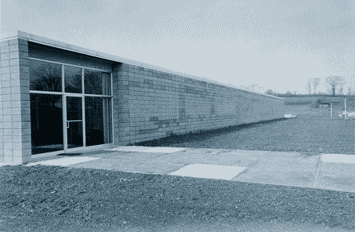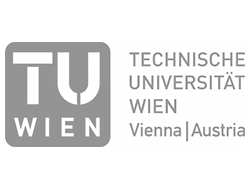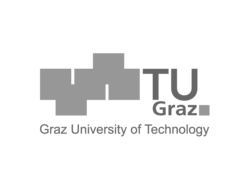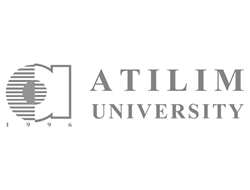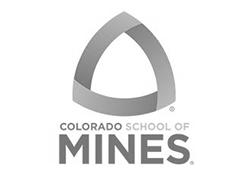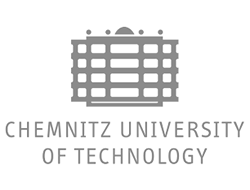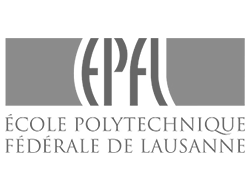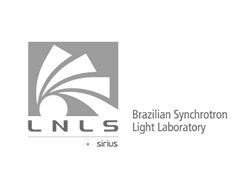A Short History of DSI...
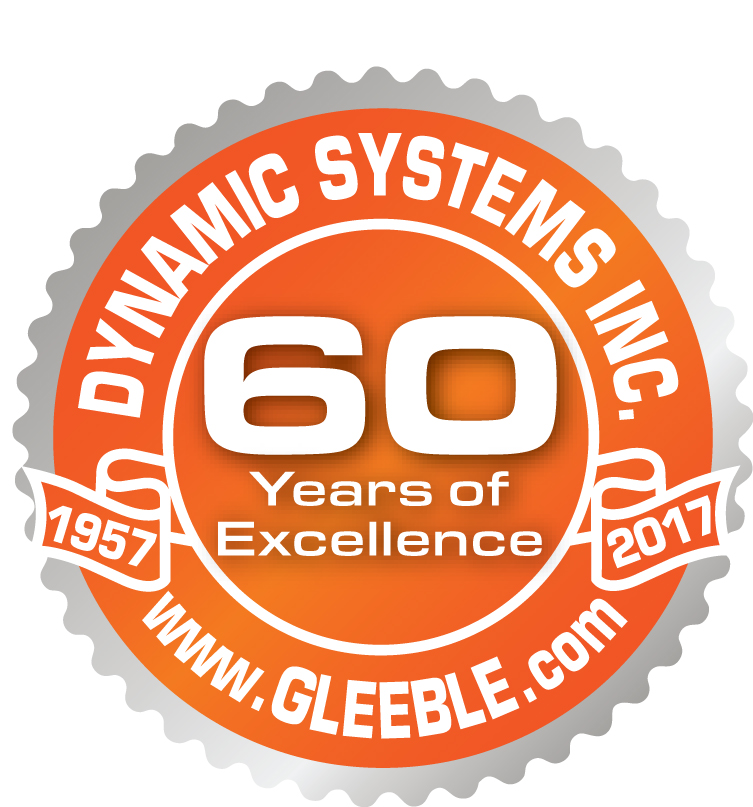 DSI was founded in 1957 by Dr. Warren Savage, Dr. Ernest Nippes, and Dr. Hugo Ferguson as a result of work being done at Rensselaer Polytechnic Institute (RPI) in welding research. They had been building laboratory equipment for their own research on welding and as they began to use it and publish papers, they began to receive requests to build similar equipment for other laboratories.
DSI was founded in 1957 by Dr. Warren Savage, Dr. Ernest Nippes, and Dr. Hugo Ferguson as a result of work being done at Rensselaer Polytechnic Institute (RPI) in welding research. They had been building laboratory equipment for their own research on welding and as they began to use it and publish papers, they began to receive requests to build similar equipment for other laboratories.
The driving force behind their research was the unique characteristics of the weld Heat-Affected Zone (HAZ) and the very limited understanding of the metallurgy of the welding processes during that time. There were limited tools available for the study of Heat-Affected Zones and the need for a tool that could generate larger quantities of material with specific microstructures was needed. Out of this work a Weld HAZ simulator was created.
When two pieces of steel are welded together steep temperature gradients are created and because of these steep gradients the microstructure varies significantly from the fusion zone to the base material. The zone of gradient microstructures is called the Heat-Affected Zone (HAZ). It can be an extremely small zone and within that HAZ there can be areas with brittle or weak microstructures that can create cracks in the material. These cracks, once started, can lead to failure within the material near the weld, sometimes with catastrophic results.
|
|
DSI's Gleeble manufacturing machine shop in the late 1960s. Today Gleeble systems are manufactured using state-of-the-art CNC machines, Computer Aided Design and modeling techniques, and the latest in electronic testing technologies. |
|
|
In 1966 DSI moved into a new factory and corporate offices located in Poestenkill, New York. This photo was taken just after completion of the new building. |
Interest in improving arc welding processes was heightened during WWII with the mass production of the Liberty Ships. Arc welding allowed those ships to be manufactured much faster than the traditional method of riveting steel plates together. Unfortunately, some of the ships broke apart—one even broke apart while sitting at the dock. Ultimately several failures were traced back to issues in the Heat-Affected Zone (HAZ) of the welds and interest in HAZ research intensified. After WWII arc welding and other forms of welding saw increased use in a wide variety of manufacturing. This further increased the need for research into welding.
The Gleeble® creators wanted a machine that would allow them to simulate welding on a laboratory scale under precise control of the thermal conditions. With such a machine, they could run a sample through a thermal cycle and create a larger piece of that same microstructure that could then be examined. With a big enough piece of similar microstructure material, investigators could study the mechanical properties and perform subsequent mechanical testing on that microstructure. Furthermore the simulator could provide the researcher the ability to rapidly generate different welding cycles and examine the results under very controlled conditions.
The first weld simulator developed—called the "Gleeble," by "Doc" Savage—was expressly designed for weld HAZ and Hot Ductility work. The specimen was resistance heated using a welding transformer with a resistance heating control. DSI's founders pioneered ways to provide high power input while still under precise temperature control and measurement.
There were no computers in the first Gleebles. They were mechanically driven in combination with analog electronics. A mechanical cam generated the thermal cycle, and it was necessary to physically grind a new cam each time you wanted a different thermal cycle.
Despite what seems now very primitive technology, at the time the Gleeble was unique. Nothing else could heat that fast—several thousand degrees per second—which is what happens in welding, and they also cooled very fast—which is also what happens in welding. The Gleeble proved a powerful tool for studying welding processes and developing welding improvements.
DSI started building weld HAZ simulators under the tradename Gleeble. Several major US corporations and universities purchased these early systems for use in their laboratories. The first system was shipped to Europe in 1962. It went to a specialty steel producer in France.
Technical Innovation in the 1960s
In the 1960s, the Gleeble began to evolve toward the machine that it has become today. Mechanical capability was provided by adding an "air-over-hydraulic" mechanical ram. Now, fixed stroke rate hot tensile testing could be done on a Gleeble. In the mid-1960s, an electronic function generator replaced the mechanical cams to generate test programs.
During that time the company moved into a facility in Troy, New York. In 1966, construction would be started on the current DSI headquarters in Poestenkill, NY. In the 1970s, DSI exports expanded further with sales of Gleeble systems to steel manufacturers in Japan.
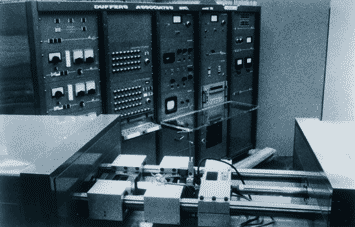 |
The Gleeble 512, manufactured during the 1970s, was physically the largest Gleeble built until the Gleeble 2000 was introduced in 1990. This model featured direct resistance heating and had an open loop mechanical system for high-speed tensile tests. |
The Arrival of the Gleeble 1500
In 1979, DSI introduced the Gleeble 1500 which was the second generation design. It featured all-new electronics design and all-new hydraulics design, combined with a resistance heating system.
The 1500 was the first true closed loop servo-hydraulic based Gleeble. Now there was a single machine with closed loop thermal, closed loop mechanical, integrated into one machine (previously the mechanical system was not closed loop); designed to work together as a combined unit, under computer control.
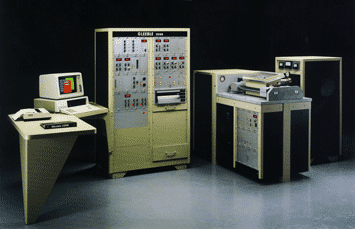 |
The Gleeble 1500, manufactured from 1979 to 1995, was the first system to feature PC-based controls and closed-loop servo hydraulics with high-speed direct resistance heating. This combination provided a platform for new physical simulation applications. |
The first Gleeble 1500s had a small tabular programming computer system. When the IBM personal computer was introduced, it was adapted to control the Gleeble.
The Gleeble 1500 proved very popular worldwide, selling into Japan, China, and across Europe as well as in the United States. The company continued to expand applications of the machine because of the more robust capabilities of the hydraulics and the computer control. Among these new applications, researchers at Nippon Steel, in cooperation with DSI, developed and refined continuous casting simulation, which proved very valuable for the steel industry. This began the development of physical simulation applications. As the equipment capability improved so did the concept of physically simulating in a laboratory all aspects of the actual process in such a way as to accurately reproduce the process on a laboratory scale.
The company built the Gleeble 1500 throughout the 1980s, steadily increasing the system's computing power as more powerful computers became available. More than 130 Gleeble 1500 Systems were shipped to laboratories around the world.
The Third Generation Gleeble
In 1991, DSI began development of a third generation system based on the new technologies available. The first Series 3 design, the Gleeble 3500, was introduced in 1995. It represented a whole new design of machine, essentially starting from a clean sheet of paper, and it was capable of everything the 1500 could perform and more.
The Series 3 Gleebles feature digital electronics and use digital signal processors for the control system. They also have the option for roll-on-roll-off mobile conversion units. These permit researchers to change from one major function—such as hot tension/compression or hot torsion—to another. This allowed a lab to buy a machine and expand it over time as their needs and applications changed, and yet the machine didn't need to have as many design compromises to do all these applications. Because the computing capability progressed so rapidly, the control system reconfigured itself for the type of testing to be done, depending upon which mobile conversion unit was connected to the Gleeble.
The Hydrawedge Mobile Conversion Unit (MCU) was introduced in the early 1990s, and it was a significant advancement in rolling mill physical simulation. For the first time, investigators could separate the strain and strain rate in the physical simulation. This patented technology allowed the Gleeble user to gain significantly better control over the physical simulation of rolling mill processes. With the addition of the Hydrawedge, the Gleeble could be used to study high speed rolling and high speed forging processes.
In 1998, the MAXStrain MCU was introduced as a tool for developing nanostructures and ultra fine grains within materials. It allowed researchers to apply large amounts of strain in the material under the precise control of temperature, strain rate and strain amount. Researchers could now use the MAXStrain to develop techniques for creating ultrafine grain materials and nano materials, including ultrafine grain steels. MAXStrain systems have also been used for research on nanostructure aluminum. One customer has used the MAXStrain to develop a physical simulation for the Thixo-forming process.
In 2004, DSI introduced the Model HDS-V40 Continuous Casting and Direct Rolling (CC-DR) Physical Simulator, the only commercially available system capable of physically simulating direct rolling from the continuous caster to the end of the hot rolling process, all in one continuous sequence on a single specimen.
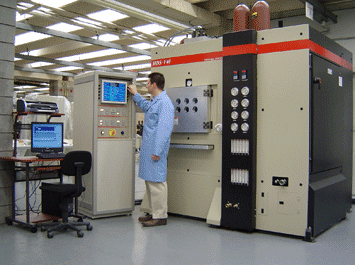 |
The HDS-V40, introduced in 2004, is capable of simulating direct rolling, from the continuous caster to the end of the hot rolling process, all in one continuous sequence. |
For the first time ever, steel and specialty metal makers had a system with the versatility to simulate continuous casting followed by direct rolling on an affordable, reproducible laboratory scale. In addition to direct rolling, the system could be used for simulating a variety of other processes including semi-solid rolling, liquid metal core reduction, hot rolling and forging. Configurations for both plane strain compression and cylindrical compression are available.
The 3rd generation Gleeble Systems have became quite popular. DSI continues to build them today, offering the Gleeble 3500 and the Gleeble 3800 with more compression tonnage. In November 2006, the 75th Gleeble 3500 was shipped to Brandenburg Technical University, Cottbus, Germany.
 |
The Gleeble 3800 includes a control console with a Digital Closed-Loop Control System, a Windows workstation, a load unit with test chamber, and a hydraulic power supply. |
Some "Interesting" Work along the Way
Here are some examples of how Gleeble systems have been used to solve real world—and sometimes out of this world—problems through physical simulation.
Nippon Steel
One of the early leaders in using physical simulation was Nippon Steel. In 1973, at the start of the first energy crisis, Nippon Steel management was concerned about saving energy and reducing production costs. At that time, Nippon Steel was producing about 80 percent of its steel through ingot casting, using continuous casting to produce the rest. But the company's management realized that if some of the quality control problems experienced with continuous casting could be overcome, it could offer lower production costs while saving energy and allow more widespread adoption of continuous casting.
Dr. Hirowo G. Suzuki, a senior researcher at Nippon Steel, was asked to address the problem. Using the Gleeble for physical simulation, they were able to optimize the continuous casting process to the extent that by the late 1980s more than 95% of Nippon Steel's production was done through continuous casting.
Today, Nippon Steel continues to use the Gleeble to do a number of simulations, including forging, hot forming, hot rolling, phase transformations, and heat treatment. Other areas of interest include hot pressing, powder metallurgy, and welding, and a variety of materials ranging from aluminum to titanium to steel.
Wuhan Steel
Using a Gleeble system, Wuhan Steel in China has shortened significantly the time required to develop new products. The number of new products developed has increased gradually every year, and the increase in sales of new products developed using the Gleeble systems has reached 70% every year. In 2001 alone, the R&D Center had a total of 65 projects in new product development, and it developed more than one hundred new products. The sale of new products has increased to 10-20% of the total revenue of Wuhan Steel.
Utah State University
Sometimes physical simulation systems are used to simulate production processes that don't exist yet. Utah State University has a grant from the National Science Foundation for the study of hydrogen storage materials that could be used in hydrogen-powered vehicles. Hydrogen powered vehicles offer the promise of being extremely environmentally friendly, but there is a huge problem: a vehicle with hydrogen stored in gaseous or liquid form could literally turn into a bomb if the storage tank were ruptured.
 |
Dr. Leijun Li and colleagues at Utah State University use a Gleeble physical simulation system to perform severe deformation on powdered lithium amide to fabricate nano-scale hydrogen storage materials. |
To solve the problem, designers of hydrogen-powered vehicles would like to store the hydrogen fuel in a solid-state form so that there would be no possibility of a blast if the vehicle were involved in a collision. The key to making solid-state hydrogen storage work is the speed at which the hydrogen can be moved in and out of solid-state storage.
Dr. Leijun Li, Assistant Professor of Mechanical and Aerospace Engineering, and his colleagues are using a Gleeble physical simulation system to perform severe deformation on powdered lithium amide to fabricate nano-scale hydrogen storage materials. The idea is that as the size of the particles in the material decreases, the speed of hydrogen absorption increases because of more surface area. To tackle the problem, the Utah State team designed a special die set for the Gleeble to accomplish the complicated deformation procedure that produces nano materials.
University of British Columbia
A good example of how a physical simulation system can provide the link between materials, processes, and computer models, at the University of British Columbia, one of the research projects conducted by the team at the Centre for Metallurgical Process Engineering was a very large undertaking supported by the American Iron and Steel Institute and also funded by the US Department of Energy. The project was aimed at developing a computer model for the hot rolling of steels which was led by a remarkable team of professors including the late J.K. Brimacombe, I.V. Samarasekera, T.R. Meadowcroft, E.B. Hawbolt, M. Miltzer and W. Poole. Initially, eight low-carbon steels were included.
"We had to generate all the parameters and then validate the predictions that the computer model made," Dr. Poole says. "The Gleeble played a central role in that project. We did austenite grain growth studies, double-hit compression tests to study recrystallization, and continuous cooling transformations, with and without compression."
The project was a success, and now a commercial software program for the modeling of hot steel rolling is available. Using the software, steel companies can set the processing parameters for their rolling mills to produce steels with the characteristics they want. Drs. Militzer and Poole are continuing to work with Dofasco, Canada's largest steel manufacturer, to add additional steels to the model, including dual phase and TRIP steels.
Los Alamos National Laboratory
But what if you need to do an out-of-this-world simulation? One unusual application of the Gleeble at Los Alamos National Laboratory is for high-temperature testing of carbon/carbon composites. Because of their high strength and ability to withstand high temperatures, these materials are being used in the housing for the power sources that are used on spacecraft such as Galileo, the probe to Jupiter.
The carbon/carbon composite housing is designed to protect the power source and keep it intact in the event of an accidental re-entry into earth's atmosphere. Therefore, a key question is: What is the strength of these composites during the extremely high temperatures of an accidental re-entry?
"At our request, Dynamic Systems designed and fabricated modifications that allow the Gleeble to supply the additional voltage needed to heat carbon/carbon materials to temperatures in excess of 3,000°C," Dr. Brian Damkroger said. "Colleagues here at Los Alamos devised and installed a special external pyrometer to make the temperature measurements. When the experiment was running, the heat and the glow were terrific—we had created the world's biggest light bulb!"
The Bottom Line...
In the world of materials, there is unrelenting pressure to develop new offerings to meet the demands of new applications. To help achieve those goals, Gleeble systems are used for process simulation, materials characterization, and basic research in technical institutes, industrial laboratories, and universities throughout the world.

